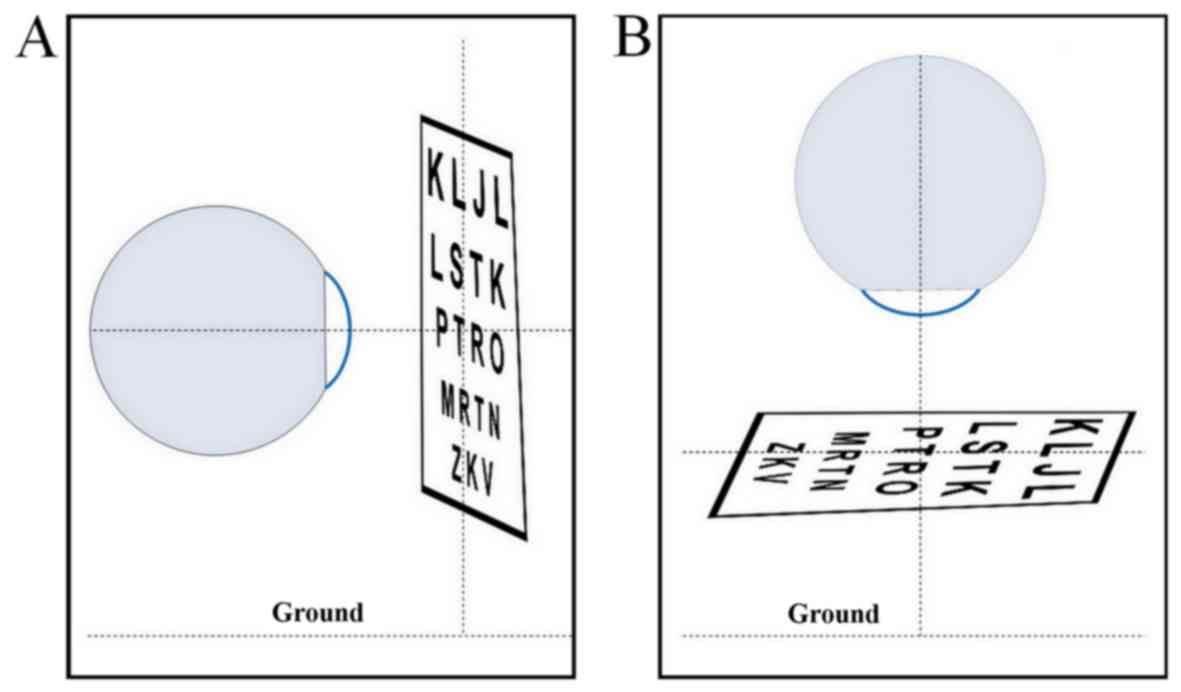Effects of a change in the direction of view to near uncorrected visual acuity following implantation of monofocal intraocular lens
- Authors:
- Published online on: April 2, 2019 https://doi.org/10.3892/br.2019.1203
- Pages: 271-276
-
Copyright: © Žáková et al. This is an open access article distributed under the terms of Creative Commons Attribution License.
Metrics: Total
Views: 0 (Spandidos Publications: | PMC Statistics: )
Total PDF Downloads: 0 (Spandidos Publications: | PMC Statistics: )
Abstract
The objective of the present study was to evaluate the effect of the direction of view of the eye on the postoperative near visual acuity of patients with monofocal intraocular lens. A total of 121 eyes in which we performed conventional cataract surgery with implantation of a monofocal lens were included in the study group. The postoperative examination of near visual acuity was performed at two different positions of the eye at a constant distance from the reading table, with the assumption of improving visual acuity when looking perpendicularly to the plane of the floor. The mutual relation of the postoperative parameters central keratometry (Kc), keratometry in the visual axis (KVA) and anterior chamber depth (ACD) for the single axial length ranges was determined using the correlation coefficients. In the case of vertical position of the eye (visual axis of the eye perpendicular to the floor), the uncorrected visual acuity following implantation of the monofocal lens was higher or equal compared to the horizontal position of the eye (visual axis of the eye parallel to the floor). The mean visual acuity at the horizontal position of the eye was 0.508 according to Jaeger's tables (P<0.001); at the vertical position, the mean value was 0.555 (P<0.001). Within the entire group, a weak association at best was observed between the postoperative parameters (Kc, KVA and ACD) and subsequent near visual acuity. Different dependence was found after categorising the group according to the axial length of the eye. In conclusion, the near visual acuity in eyes with an implanted monofocal lens for emmetropy to distance reached higher values at the vertical vs. horizontal position of the eyes. However, neither of the observed parameters (KC, KVA or ACD) can be unambiguously determined as decisive for the assumption of the described feature.










